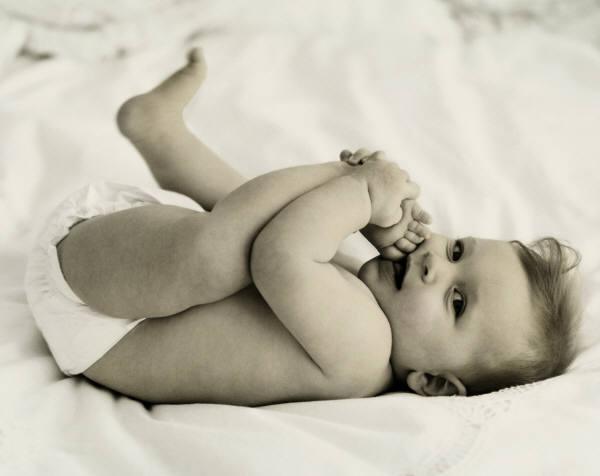I woke up slightly late and so, by the time I got to the Lourve Museum, it was almost noon. Formerly a royal palace, the Lourve is one of the world's largest museums and has one of the greatest art collections ever. To enter, one has to pass through the controversial 21m glass pyramid - a startling contrast of the ultramodern against the palace's classical lines. Commissioned by the late president François Mitterrand and completed in 1989, it allows sunlight to shine on an underground reception area. The photogenic pyramid has become one of Paris's landmarks.

The most famous exhibit at the Lourve has to be Leonardo da Vinci's Mona Lisa. Acquired by François I to hang above his bathtub, Mona Lisa has been the source of legend for centuries. She commands a new gallery of her own and the painting is guarded and protected by bulletproof glass. The world's most famous painting was stolen in 1911 and found in Florence in 1913. Other less well known paintings by da Vince are Virgin and Child with St. Anne and the Virgin of the Rocks. The other highlights of the museum are the armless statue of Venus de Milo and Winged Victory, the headless statue discovered at Samothrace and dating from about 200 B.C.

Top: Mona Lisa, its small size relative to its fame, and the security around the painting. Bottom: Other paintings by da Vinci
 Venus de Milo and Winged Victory
Venus de Milo and Winged VictoryLeaving the Lourve, I took a walk through the spectacular statue-studded Jardin des Tuileries, bordering Place de la Concorde. This exquisitely formal garden was laid out as a royal pleasure ground in 1564 but was thrown open to the public by the French Revolution. Trees are arranged according to designs with arrow-straight walking paths. Breaking the sense of order and formality are bubbling fountains and a series of round ponds on which kids sail model boats.
Place de la Concorde is an octagonal traffic hub, built in 1757. It is dominated by an Egyptian obelisk from Luxor, the oldest object made by humans in Paris, circa 1200 B.C. In the Reign of Terror at the time of the French Revolution, the dreaded guillotine was erected on this spot to claim thousands of heads.
Place de la Concorde is an octagonal traffic hub, built in 1757. It is dominated by an Egyptian obelisk from Luxor, the oldest object made by humans in Paris, circa 1200 B.C. In the Reign of Terror at the time of the French Revolution, the dreaded guillotine was erected on this spot to claim thousands of heads.
Heading north to Place Vendome, an octagon-shaped square lined by 17th century buildings, is home to some of the city's most exclusive stores, specializing in perfume, fashion and jewellery. In its centre towers a 44m column with bas reliefs made from the bronze of 1200 cannons captured in 1805 from the Austrians.
A short walk away is La Madeleine, one of Paris's minor landmarks. Though construction began in 1806, it wasn't consecrated until 1842. Resembling a Roman temple, the building was intended as a monument to the glory of the Grande Armée. Later, several alternative uses were considered: the National Assembly, the Bourse, and the National Library.
A short walk away is La Madeleine, one of Paris's minor landmarks. Though construction began in 1806, it wasn't consecrated until 1842. Resembling a Roman temple, the building was intended as a monument to the glory of the Grande Armée. Later, several alternative uses were considered: the National Assembly, the Bourse, and the National Library.
 Clockwise from top left: Jardin des Tuileries, Place Vendome, La Madeleine, Place de la Concorde
Clockwise from top left: Jardin des Tuileries, Place Vendome, La Madeleine, Place de la ConcordeMaking my way back to Place de la Concorde, I embarked on the most popular walk in Paris, leading all the way to the Arc de Triomphe. The 3.2km walk would take me through Champ Elysee, Musee de Petit Palais and Grand Palais. Pointing from Place de la Concorde like a broad, straight arrow to the Arc de Triomphe at the far end, the Champs-Elysées (the main street of Paris) is touted as the world's most famous promenade. For the first third of the stroll from Place de la Concorde, the avenue is hedged by chestnut trees. Then it changes into a double row of palatial hotels and shops, movie houses, office buildings, and block after block of sidewalk cafes. I took a brief detour from the boulevard for the Musee de Petit Palais and Grand Palais. Built for the 1900 World's Fair, the Petit Palais and Grand Palais are covered by domes of iron and glass. With its 240 metre-long façade, the Grand Palais is used for various exhibitions. The Petit Palais, located across the street from the Grand Palais houses the Musee des Beaux-Arts de la Ville de Paris.
 Top: Musee de Petit Palais and Grand Palais. Bottom: The famed Champ-Elysees
Top: Musee de Petit Palais and Grand Palais. Bottom: The famed Champ-Elysees
At the end of the broad boulevard is the Arc de Triomphe. It's the biggest triumphal arch in the world, about 49m high and 44m wide, and located in the middle of Paris's busiest traffic hub. Commissioned by Napoleon in 1806 to commemorate the victories of his Grand Armée, it wasn't completed until 1836. Four years later, Napoleon's remains, brought from St. Helena, passed under the arch on their journey to his tomb at the Hôtel des Invalides. Since that time it has become the focal point for state funerals. It's also the site of the tomb of the Unknown Soldier, in whose honor an eternal flame burns.








3 comments:
u are so lucky to be in Paris (the place that I have always wanted to go). But look like the vacation to this romantic city would have to put on hold until my children are big..
wahh...love the pics. i've got plans for france so this is a great tip ;).
guess what, my hubby went to lourve and fell asleep lookin at the monalisa photo hahaha...teruk rite
Chinnee, given your determination, sooner or later, your dream will surely come true.
Jazz, feel free to contact me if you need any info on Paris. But I guess your hubby may know more than me, since he travels so much.
Post a Comment